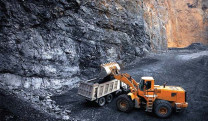Did snow and glacier melt cause the floods?
Who do we blame for the flood? Other than some govt officials nobody thinks it was a natural catastrophe.

On August 2, the National Disaster Management Agency (NDMA) announced that the worst flood in the last 80 years had struck the country, but no comparative data was provided to justify this. Khyber-Pakhtunkhwa received the most rainfall during July but no record was broken. On the other hand, the Tarbela and Taunsa dams received so much water that it broke a record that had stood for over a century. If the flood was a result of heavy rainfall, why doesn’t the data for flood and rainfall support one another?
The second wave of flood began at Tarbela on August 5 and a flood warning was issued on August 11 saying that the Guddu barrage was likely to attain exceptionally high level of flooding by August 19. No cause was given. Pakistan Meteorological Department (PMD) data on rainfall shows that only Sindh received rainfall 76 per cent above normal in the first 12 days of August. Khyber-Pakhtunkhwa and Punjab received only 14 per cent more and 30 per cent more respectively. What caused the second flood wave if there was no heavy rain in the regions? So were the floods caused by above normal snow and glacier melt?
Scientists are pointing fingers at climate change as one of the factors for unprecedented heavy rains and the heat wave. In a research study by PMD on last year’s rainfall, a statement by Dr Hayley Fowler of the University of Newcastle in the UK says: “The water inflow in Tarbela is largely dependent on three sources; glaciers (60 per cent), snow melt (30 per cent) and rainfall (10 per cent).” The report also mentions the mean temperature of the catchment areas as the determinant factor for the level of flow from glaciers. Climatic change appears to be a more important factor of the flood this year. The PMD admits in one of its report that there is a need to conduct comprehensive study on glaciers and develop a model to determine water melt from them.
This means that 90 per cent of the water inflow in Tarbela remains beyond the monitoring capability of our environmental agency and hence the unprecedented flood this year was beyond their assessment. As global warming is constantly assuming a menacing role, we need to improve our monitoring system to minimise the damages caused by change in climatic conditions. Within the last five years, we have gone through the earthquake in 2005, the flood in 2007 and the flood in 2010. We must take action for minimising the affects of the natural disasters rather than simply cursing them or seeking help from others.
Published in The Express Tribune, October 18th, 2010.


















COMMENTS
Comments are moderated and generally will be posted if they are on-topic and not abusive.
For more information, please see our Comments FAQ